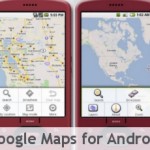 San Francisco — Barely time has passed for most of us, AOL’s MapQuest is the oldest mobile mapping application existed than any of its rivals. Even today, MapQuest remains one of the most popular places to get maps and directions online, on Monday took the wraps off a new application for iPhone users called “MapQuest 4 Mobile,” designed as an alternative to the built-in Google Maps, playing a catch up to the iPhone, which remains the most important smartphone platform for the time being and billed as a “leap forward in how people interact with maps, directions and local search” on their Apple handsets.
San Francisco — Barely time has passed for most of us, AOL’s MapQuest is the oldest mobile mapping application existed than any of its rivals. Even today, MapQuest remains one of the most popular places to get maps and directions online, on Monday took the wraps off a new application for iPhone users called “MapQuest 4 Mobile,” designed as an alternative to the built-in Google Maps, playing a catch up to the iPhone, which remains the most important smartphone platform for the time being and billed as a “leap forward in how people interact with maps, directions and local search” on their Apple handsets.
Today, MapQuest launched its first free iPhone version of its app, called MapQuest 4 Mobile, and after testing it for a while, it quickly became apparent that MapQuest’s app makes it easy for users to conduct one-tap category searches from any location on a map, and is a perfect challenger for the iPhone’s built-in mapping application, which is based on Google Maps.
Prior to this, BlackBerry users have already been using a similar application on their devices since last year, but now thanks to the iPhone’s multi-touch screen, the iPhone version of MapQuest should be a lot easier to navigate.
Users can unleash a completely novel MapQuest 4 Mobile experience to take advantage of the iPhone’s unique Multi-touch interface and large screen. The end result is truly the next evolution of maps & directions on the iPhone, offering a set of unique features that simplify your mobile mapping and directions experience.
The new iPhone MapQuest4Mobile app delivers a rich environment with innovative new features. Unlike the Google Maps for iPhone, users of the MapQuest software can plan and save maps and driving routes on their computer using MapQuest.com and then retrieve them on the iPhone by logging into their My Places account.
For trips that include more than one stop, users can easily change the order of several stops on a multipoint trip by dragging one or more of those stops to a different position in the order.
Driving directions can be viewed in standard map or list view, but are also available in a third view called “Max Maneuver” that begins when the iPhone is held in landscape mode. Under this view, each maneuver instruction fills the entire screen and users can progresses to the next or previous maneuver simply by “swiping” the screen to the right or left. This is essentially advantageous if the iPhone is on the seat next to you and you are driving.
Some other smart attributes of the MapQuest iPhone app include smooth panning maps, live traffic, free-form search, GPS to identify a user’s current location, and a search history. Some users may find these features handy given that MapQuest for iPhone cannot access addresses stored in an iPhone’s Address Book the way Google Maps can.
Perhaps one of the most fascinating aspect of the new app is the icon-based “one tap” local search capability. There is a great deal of personalization available and the app combines the online and mobile experiences very nicely. Users can smoothly access routes and directions activated on the desktop through the app, providing a high level of integration between the mobile and PC experiences. This is not “send to mobile;” it offers a deeper level of integration. Another example of this integration, registered users who have saved locations or directions via “MyPlaces” online can access all that information by signing in on the iPhone app.
View a slideshow below:


